消費者行動とマーケティング戦略
データから消費者行動を分析しましょう。データドリブンなビジネス意思決定はビジネス成長に直接的に作用します。消費者分析テンプレートのダウンロードもあります。
2021年2月3日
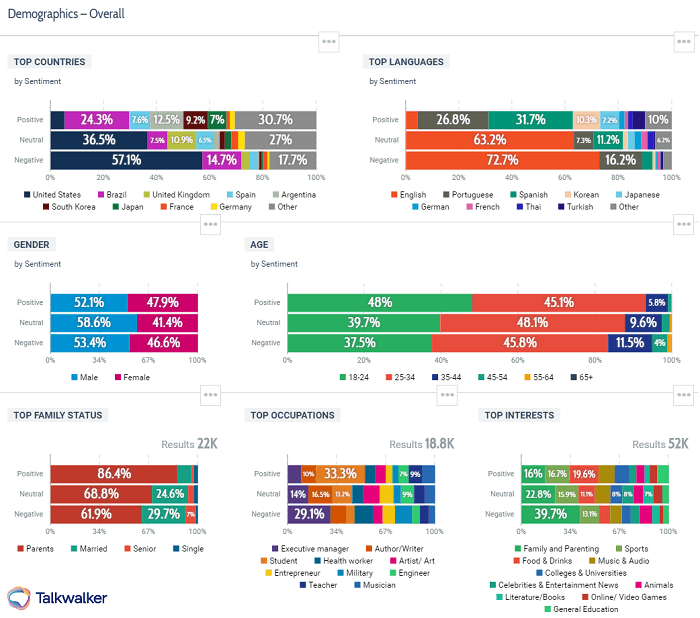
消費者インサイトを活用し消費者行動を理解し、購買行動へと促します。導入企業の成功事例をご覧ください。
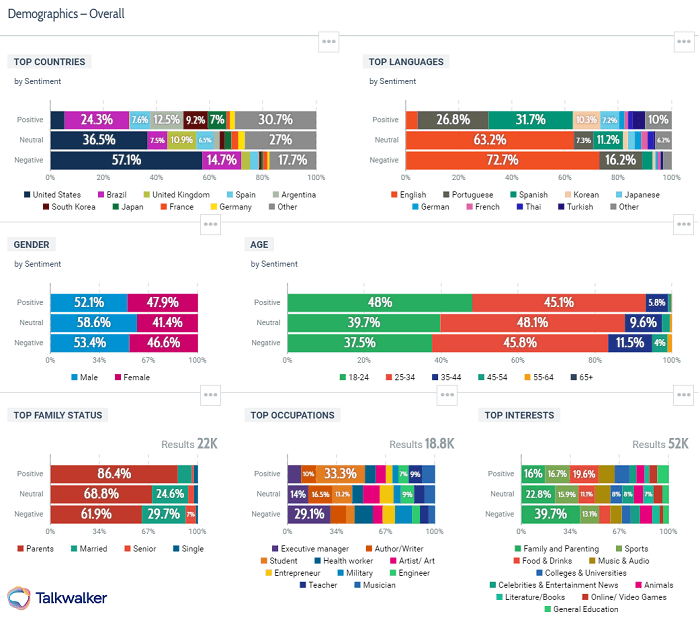
Talkwalker Analytics- Coca-Colaの属性分析
目次
消費者行動とは
消費者行動の定義 – 消費者が製品購入時に行う意思決定プロセス、影響力、行動など。
消費者意思決定プロセスを分析および特定する - 消費者行動のモニタリングをすることで、効果的にキャンペーンを実施することができるようになります。
消費者行動のモデル
消費者行動の理解が重要である理由
消費者行動の理解、分析および追跡はビジネスに不可欠です。
消費者はブランド/ 製品、並びに競合他社のブランド/ 製品についてどのように感じているか?
消費者が製品B ではなく製品A を選ぶ理由とは?
消費者はどのようにしてブランド/ 製品のリサーチを行っているのか?
そうしたリサーチにおける消費者レビューUGC(ユーザー生成コンテンツ)の重要度とは?
消費者はオンラインまたはオフラインのどちらを好むのか?
Talkwalkerのセンチメント分析はブランドに対する消費者の心理(ポジ・ネガ)を教えてくれます
オンラインあるいはオフラインで、消費者の購買決定に何が影響を及ぼしているのかを認知することで、最も効果的なやり方でブランディングをすることができます。ポジティブなカスタマージャーニーを作ることができれば、自然な形で消費者に消費を促すことが可能です。
Salesforce によると、消費者の76% が会社や企業に自らのニーズや期待を認知して欲しいと考えているとのことです。そして、自身の行動を理解して欲しいと考えています。そうしたことを踏まえたうえで初めて製品を効果的に消費者に展開することができるのです。
考えてみましょう。彼らは、1日に何回、意思決定を下しているのでしょうか。-「昼食は何を食べようかな?」 「コーヒーでも飲みに行こうかな?」 「あのジーンズを買うべきかな?」数えきれないほどの回数です。
消費者が無意識に下す意思決定はマーケティング担当者にとって大きな意味を持ちます。消費者の心理 – 購買決定を下す際の思考プロセスを理解することで、マーケティングチームがこうしたインサイトを活用し、戦略のターゲット化および収益向上に直結するキャンペーンを回すことができます。
例えば、会計のために列を作って待っている際に、ついさりげなく並べられているチェコレートを買い物かごに入れてしまったことは何回ありますか? あるいは、他の客が購入したものを覗き見している時に、今すぐ購入する(Buy Now)のボタンを押してしまうこともあるでしょう。彼らにとって、”取り残される不安や恐怖”というのは強力な購買力につながっています。 だからこそ、もっと多くのものを購入させることが可能なのです。
この心理を活用しない手はありませんよね?

他の人が購入したものを買いたいと思ったことはありませんか?
追跡を始めるにあたり、まずは消費者の属性の内訳を作成しましょう
消費者の年齢
住んでいる地域
消費者のライフスタイル
社会的なステータス
広範囲なリサーチやABテストを実施することなく、顧客を予測するのは避けましょう。
消費者行動をモニタリングする
消費者行動をモニタリングする、すなわちこれはマーケティング戦略の立案の一部作業と考えましょう。
マーケティング戦略を立案する際、消費者行動をスタート地点からモニタリングをし、戦略に影響するであろう内的および外的のインサイトを観察することが鍵となります。
消費者行動のモニタリングは、機会(Oppotunity)と脅威(Threats)を解明し、マーケティング戦略を変更し、改善してくれるきっかけになります。また、消費者行動のモニタリングに使用するチェックリストは、「既存のマーケティング状況はどうなっているのか?」という問いに答えるのに役立ちます。
モニタリングをするにあたって、まず最初に組み込むべきものがあります。
それはSMART 目標です。既存の状況を理解してから設定していきましょう。
効果的で達成可能な目標を立てましょう
Specific(具体的に) - 実際の数字および期日
Measurable(測定可能な) - ゴールを追跡および評価する手段や方法
Achievable(達成可能な)- 不可能ではない目標に向かって取り組む
Relevant(目標に関連した) - 実現するためのリソース確保を徹底する
Times(タイムリーに) - 目標達成のタイミング
そして、もう一つ。自分の会社、並びに競合他社を対象にいくつかのSWOT 分析も忘れずに実施しておきましょう。
チームの将来のパフォーマンスに影響を及ぼす内的および外的要因を特定するのがモニタリングです。内的要因とは長所や短所であり、外的要因は機会と脅威になります。
PEST 分析 - 政治、経済および技術といった外的要因の変化に対応するための分析です。
**Porter のファイブフォース(5 Forces)**はご存じでしょうか。
ハーバードビジネススクール(Harvard Business School)の教授であったMichael Porter は、会社や企業がビジネスへの影響に関し、自身の外で生じる要素を検証すべきだと考えました。彼は、市場や産業を形成するパワーを備えた5つの力を特定しました。そして、そうした力を用いて産業または市場の競争、魅力、収益性の程度を測定することができます。
効果的な消費者行動のモニタリングを実施するにあたって、勘案すべき全ての要素を説明します。適切に実装することで、課題と機会を特定してマーケティング戦略を改善することができるようになります。
まずは最初に…
消費者行動パターン
まず、消費者行動パターンを認識しましょう。こうしたパターンに含まれるのは…
購買の場所またはロケーション
今日では、大型のスーパーマーケットで衣類、DVD、コンピュータ、そしてトマトやジャガイモといった様々なアイテムが販売されており、そういった環境の中で、消費者は食料品以外の製品を購入するのに専門店を訪れる傾向があります。
明らかに、どんな規則にも例外があり、それが消費者にとって利用可能な唯一の店舗とすると、パターンは分裂します。
消費者が複数のロケーションにある様々な店舗(価格比較、ブランドの好み)を訪れている傾向があることから、彼らが1つの店舗に忠誠でないということにはなりません。従来型の店舗の場合、ロケーションは考慮すべき要素の一つです。
購入する製品の種類と数量
消費者の買い物かご、ソーシャルメディアでのやり取り、レビューサイトに着目すると...有益な消費者情報が見えてくることでしょう...
消費者が購入した品物は何であったか?
各品物について何点購入されたか?
消費者が購入したのはあなたのブランドそれとも競合他社?
消費者が買ったものを考察していきましょう。各品物について何点購入されましたか? 大量購入ですか、それとも高級品1点ですか? 購入された品物の種類と数量が影響を受けるのは…
消費者の金銭状況
製品の価格
製品に対する消費者の要件
品物が傷みやすいか/ 耐久性があるかどうか
製品の選択肢の幅
購買のタイミング&頻度
消費者が午前中に買い物をしたいと考えている中、午後しか営業しない店舗を運営するのは無意味です。
消費者の購買パターンを検証して消費者が求めるものを供与しましょう。eコマースのサイトの場合、さほど重要ではありません。ただし、カスタマーサービスが年中無休24時間体制でないといけないという事実を認識すべきです。
購買の手段
買い物をするにあたって選択する手段や方法は購買者の行動パターンを体現してくれます...
店内に入ってゆきます。会計のためにレジに並んでいます。そして現金/ クレジットカードを手渡します。
オンラインでは、注文し、クレジットカード払いまたは代引き決済します。
消費者行動の種類
店内をうろうろする
衝動買い
事前に情報取集する
交渉
特売品を漁る
ブランドに忠実
実践的な買い物
ウィンドウショッピングなど
店内をうろうろする客
マーケティング担当者が認識すべきなのは、こうした消費者は買い物が大好きだということです。こうした消費者は自身が求めているものについて固定観念を持っていませんが、説得に弱いです。奇をてらったディスプレイ、自明の恩恵、そしてバーゲンといった要素に惹かれ、ついつい購入してしまうのです。
衝動買いする客
このタイプの消費者はいつだって不要な買い物をついついしてしまいがちです。
私もまさにこのタイプです。
IKEA では、こうしたタイプの消費者の獲得に報奨制度を設けています。
事前に情報取集する客
おそらく売る相手として最も厄介でしょう。こうした消費者は念入りにリサーチしています。そして、輪を掛けて追加リサーチを行います。レビューサイトをチェックするのが大好きな消費者です。対象は車かもしれませんし、歯ブラシかもしれません。徹底したリサーチを行ったうえで、自分が何を欲しいか知っている消費者です。
交渉する客
このタイプの消費者がやって来る目的は値引きです。こうした消費者は比較対象のあらゆる店舗を訪れ、当てもなく見て回り、どうすれば製品を安く入手できるか心得ているのです。
バーゲンに飛びつく客層
最新機種のスマートフォンの発売開始時に店外に並んでいるのはどういったタイプの消費者でしょうか? ファッションブランドが新コレクションの発売を開始した時に何時間でも平気で並ぶのは? 別のブランドに乗り換えるのではなく、特定の店を愛し、お気に入りのブランドにいくらでも費やすのは?
ブランドに忠実な客
最新機種のスマートフォンの発売開始時に店外に並んでいるのはどういったタイプの消費者でしょうか? ファッションブランドが新コレクションの発売を開始した時に何時間でも平気で並ぶのは? 別のブランドに乗り換えるのではなく、特定の店を愛し、お気に入りのブランドにいくらでも費やすのは?
ブランドにこだわる消費者はとても忠実です。こうした消費者にポイントカードを付与し、毎月ニュースレターを届ければ、誓約してくれることでしょう。
実践的な買い物をする客
マーケティング担当者にとって手強いこうした消費者は、自身の買い物リストに律儀なまでに忠実です。理由が予算面の制約なのか見事なまでの理性なのかは分かりませんが、衝動買いというのはこうした消費者には無縁です。
ウィンドウショッピングをする客
巧みに実際の購入に導きましょう!
4つの購買決定における行動
購買決定行動は4つのカテゴリーに分割されます…
複雑な購買行動
消費者は製品が高価である、リスクを伴う、あるいは日常的ではない購入を理由に、高いレベルの関与を示します。例えば、住宅、車、ヨット、保険などです... 代替のブランドについて真剣にリサーチします。そして比較を行ったうえで最終の意思決定を下します。
不協和解消型購買行動
こちらも値段の張る、リスクを伴う、非日常的な購入です。販売上の不快を経た購入における不協和というのは、消費者が自身の選択について疑念を抱く際に生じます。初期評価と最終の意思決定の間に不一致が存在しますか? 知人が選択に対する疑念の種を蒔いたのでしょうか?
習慣的購買行動
このタイプの購買行動はブランドに対する忠誠心の低さを体現しています。製品の価格が低いと、消費者の関与が低下します。砂糖、パン、トイレットペーパー、豆など、購入がほぼ自動化されています。リサーチは一切行われません。情報を入手する経路はTV 広告、新聞等で、こうした媒体はブランドへの馴染みを生み出します。
バラエティを求める購買行動
スリルや刺激を求めており、ブランドに対する忠誠心は低いです。色々な要素を組み合わせようという消費者心理を基本とした行動です。以前の選択に不満がということではなく、ただ、珍しい味のポテトチップス、や新しいタイプの朝食用シリアルを試してみたいという行動が例として挙げれます。
消費者行動に影響を及ぼすものとは
消費者購買行動には以下の3つの要素が影響を及ぼすと考えられます:
ソーシャルインフルエンサー**:**社会的要因が中心。文化的な要素や周りにいる家族からの影響を受ける。
マーケティングインフルエンサー **:**マーケティングの要素が強い。商品にコピー内容や、価格、販売場所など
状況の影響力を持つインフルエンサー**:物理的、環境的要因が中心となっており、その他の要素として時期的なもの、その時のタスクなども影響される。**
詳しく見てみましょう。
マーケティングキャンペーン
優れたマーケティングキャンペーンは、製品を購入するように消費者を説得することができます。最適化されたメッセージを発信することで、消費者に購入したいと思わせることができたり、より高価な製品を自然な形でおススメしたり、まとめ買いの方がよりお得と思わせることができます。
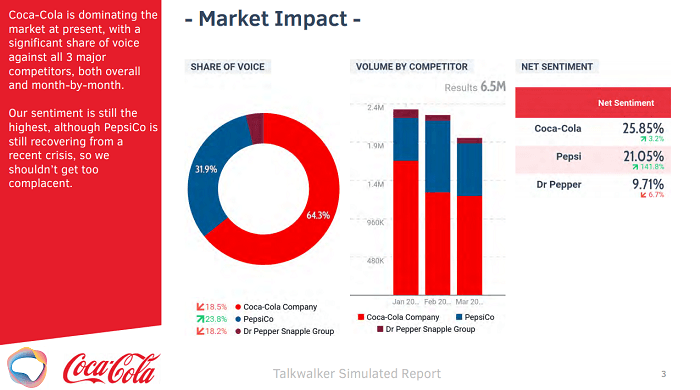
コカコーラ社は、説得力のあるブランドメッセージで炭酸飲料市場のメインプレーヤーに上図は、Talkwalkerで可視化した投稿量を可視化した分析結果。競合他社であるペプシやドクターペッパーと比較してもあ、圧倒的に投稿量が多い。SNS運用担当者必見!SNSレポートの無料のテンプレートはこちらから
SNS・ソーシャルメディア
多くの消費者は、SNS・ソーシャルメディアを日々利用しています。そして、彼らの生活の大きな一部を占めることから、ご自身の購買決定に影響を与える上で確固たる役割を果たしています。具体的な事例を紹介してまいります。
インフルエンサー**:SNS・**ソーシャルメディアに精通したインフルエンサーは自身が使用している店舗、ブランド、製品を紹介します。そして、何千人という数のファン・フォロワーに対して、ポジティブなレビューを共有します。その結果、企業やブランドはターゲット層となる消費者に、より影響力のあるメッセージングの展開を図ることができます。
UGC(ユーザー生成コンテンツ) **:****SNS、**ニュース、レビューや掲示板は、お互いの意見を交換することができるチャネルになります。ここで広げられる会話は、ユーザー同士を自然な形で繋げ、より信頼性のある情報元として人々は集まってきます。ある調査では、消費者の81% は、オンラインでリサーチをした上で実際に購入している結果が出ています。
The best ice cream on earth. pic.twitter.com/05Dz5DnU3u
— Jonathan (@jpboogie2381) March 9, 2019
Talkwalkerの動画分析にて発見されたユーザー生成コンテンツ
SNSを利用するブランド:****ターゲットとしたいオーディエンスが存在するSNS上では、注目される存在である必要があります。消費者の多数が、日々SNSを頻繁に活用していることを考えると、企業・ブランドとしても、SNSの世界に参入することは必須事項といえます。特に、今後はデジタルシフトが加速していくなか、企業としてもSNS上で発信し、消費者たちとの会話に積極的に参加していきましょう。
**SNS広告:**SNS・マーケティング戦略にSNS広告を組み入れることも手段の一つです。
経済の状況
当たり前のことに聞こえますが、やはり経済の状況も消費者の購買行動に影響しています。好景気の場合、消費者の消費意欲が自然と高まります。そして、消費者は自身の財務状況にかかわらず、高価な製品を積極的に購入します。
同様に、景気低迷期には、財務状況が悪化していない場合でも、消費が冷え込みがちになります。
身内の意見
家族、友人、同僚、知人、インフルエンサーおよびその他の消費者が購買決定を促す場合もあります。
レビュー、友人や家族からの口コミ、比較ウェブサイトは、製品の情報源という点では最も信頼されています。反対に、宣伝色が強いインフルエンサーによる広告や販売担当者による強引な押し売りは逆に購入意思を大きく下げてしまいます。
ただし、年齢によっては、反応が変わってくる場合もございます。Z世代世代ほどブロガー、ユーチューバー、インスタグラマー、著名人等のインフルエンサーによるおススメを受けれてくれる傾向があります。
購買力
ご自身が自由に使える金額をどれくらい持っているかということが購買決定に影響を及ぼします。ターゲットに命中する型破りのマーケティングキャンペーンでも、本人に購買力がなければ、話になりませんよね。
マーケティング担当者として、購買力に応じてセグメント化しておいて損はありません。
消費者行動におけるセグメンテーション
消費者はパーソナライゼーションを求めています。
消費者の84% は、彼ら自身を単なる数字ではなく、人として扱うようになれば、ブランドは成功すると話しています。
**消費者はブランドに対し、自分たちの声に耳を傾け、そうして耳にしたことを実証して欲しいと考えています。**そのためには、顧客のセグメンテーションを活用する必要があります。では、6種類の主要な行動のセグメンテーションを見てみましょう。
1.メリット
消費者が製品、例えば漂白剤を購入する際、消費者が求める特長がいつくかあると考えられます。白いものを白く保つこと。色褪せることなく、鮮やかさが維持されること。爽やかな香りがすること。非アレルギー性であること。消費者は、製品をリサーチしつつ、どの特長を重視すべきか実証します。それこそ、購買決定へと促してくれる動機付ける因子なのです。
2.機会
特別な機会 - 休日、季節のイベントなど、消費者が特別の購入をするタイミング
定期的機会 - 誕生日、記念日、休日、毎月の購入、日々の日用品の購入など
希少的機会- 不定期で予測するのが難しい機会が当てはまります。例えば、 結婚式、葬儀など
3.利用率
消費者が製品を購入する頻度は、ブランドに対してのロイヤリティ、商品力、価格などが影響されます。
4.ブランド・ロイヤルティ
長期的に購入していくれている顧客層は他のあらゆる消費者以上に重要視すべきです。彼らに継続的に購入してもらい、ロイヤリティを向上してもらう上で、彼らには特別なプロモーションやイベントなどを実施すべきでしょう。
5.利用者の統計
主な事例:
非利用者 – 全く利用者にはならない
見込み客
初めての購入客
定期的な購入客
離別した客 – 競合他社に流出
6.カスタマージャーニー
自身の販売スキームを常に把握しておきましょう。顧客を所在地別にセグメント化し、ステージごとにパーソナライズ化されたメッセージを発信することで、コンバージョン率を高めます。
また、同時に顧客がプロセスから抜け落ちている領域を特定していきましょう。
顧客の声を可視化し、ビジネス成長を加速させましょう
いかがでしたでしょうか?
消費者行動を把握し、それらをモニタリング、そしてインサイトを次回のキャンペーンに反映させ、最適化していく。一見、通常のPDCAのように思えますが、消費者行動をたどれていない企業も多く存在しています。
今後はデジタルシフトが加速していくなか、「顧客の生の声」をリアルタイムで拾い、認識していくことは、企業・ブランドにとっては今後のビジネスの成長に影響するとても重要なカギとなります。
これらからは、分析ツールを積極的に活用し、これまで消費者の心理や行動を想像・妄想していたステップから、信用のおけるデータを基に、重要な意思決定ができるようにしていきましょう。
顧客の声を可視化するために必要な分析手法をお探しの方は、ぜひ下記の資料をご覧ください!

Consumer behavior in marketing
I’m always banging on about data. Collecting it. Analyzing it. Visualizing it. While you’ll find consumer insights, there are other factors to consider when looking at consumer behavior. Culture, society, income, age, attitude... also influence buyer habits. To see the full picture, you need to do a consumer behavior audit…
CTA - GET MY CONSUMER BEHAVIOR AUDIT CHECKLIST!
Talkwalker Analytics - demographics of Coca-Cola consumers.
Table of contents
What is consumer behaviour?
Why is understanding consumer behaviour important?
What is a consumer behaviour audit?
What are consumer behaviour patterns?
What are the consumer behaviour types?
4 types of buying decision behaviour?
What influences consumer behaviour?
Consumer behaviour segmentation
Consumer behaviour audit template
What is consumer behavior?
Consumer behavior definition - the decision process, influences, and actions that a consumer performs when purchasing a product.
Analyze and identify the consumer decision-making process - conduct a consumer behavior audit - and you’ll be able to target your marketing effectively.
Model of consumer behavior.
Why is understanding consumer behavior important?
Understanding, analyzing and keeping track of consumer behavior is critical for businesses.
How do consumers feel about your brand and/or products, and those of your competitors?
Why do they choose product A, rather than product B?
How do they research a brand and/or product?
How important are consumer reviews in their research - user-generated content?
Do they prefer to shop online or offline?
Talkwalker sentiment analysis will show you how consumers feel about your brand.
Recognizing what influences consumers’ purchasing decisions - off or online - will enable you to present your brand and products in the most alluring way. Creating a positive customer journey - smooth and unhindered - will encourage consumers to part with their cash.
According to Salesforce, 76% of consumers expect companies to recognize their needs and expectations. They want you to understand their behavior. Only then can you market your products to them effectively.
How many decisions do you make during the day? What do I want for lunch? Do I want to go for coffee? Should I buy those jeans?
Decisions we make automatically, significant to marketers. Understanding the mind of the consumer - their thought processes when making a decision - means that marketing teams can use these insights to target their strategies and increase revenue.
For instance, how many times have you stood in line at the checkout and thrown one of those sneakily placed chocolate bars into your basket? Or you’re about to click the Buy Now button when you spy things that other customers purchased. FOMO is strong! Into your cart goes more stuff. Do you need it?
Boom… a marketing win!
Ever tempted to buy something because everyone else did?It happens…
Establish a demographic breakdown of your consumer base…
Age group of consumers
Geographical location
Lifestyle of consumers
Social status of consumers
But, don’t presume to know your customers without extensive research and testing.
You assume loud colors are the way to attract teenagers? Ever met a goth?
What is a consumer behavior audit?
Part of your marketing planning.
Please say it’s part of your marketing planning.
You’ll examine consumer behavior at the start of your marketing planning, and continue to run audits throughout. It’ll look at both internal and external influences on your plan.
Your consumer audit will clarify opportunities and threats, and identify ways you can alter and improve your marketing plan. A consumer behavior audit checklist will help you answer the question... “what is the current marketing situation?”
To run your audit, you’ll need to include…
Your SMART goals. Only possible to set, if you understand your current position...
SMART - specific, measureable, achievable, relevant, timely.
Plan effective and achievable goals...
Specific - real numbers with real deadlines
Measurable - how you’ll track and evaluate your achievements
Achievable - work towards a goals that’s challenging, but possible
Relevant - ensure you have the resources to make it happen
Times - when you’ll achieve your goal
You should have several SWOT analyses already - for your company, and for your competitors...
SWOT analysis for the internal & external environment.
It’s an audit that identifies the internal and external factors affecting your team’s future performance. Internal factors are strengths and weaknesses, while external factors are opportunities and threats.
PEST analysis - an element of crisis management - ensures a company is prepared for a change in external factors, such as political, economical, technological, etc.
PEST for external environment.
Heard of Porter’s 5 Forces?
Porter’s Five Forces Analysis for external environment.
Michael Porter, a Harvard Business School professor, believed companies should examine factors occurring outside their organization with the potential to impact business. He identified five forces with the power to shape markets and industries. The forces can be used to measure the intensity of the competition, attractiveness, and profitability of an industry or market.
I’m going to explain all the factors that you need to take into account, to conduct an effective consumer behavior audit. Done properly, you’ll be able to identify challenges and opportunities to improve your marketing strategy.
First up…
What are consumer behavior patterns?
Start by recognizing consumer behavior patterns. These patterns include…
Place or location of purchase
While a lot of the larger supermarkets sell clothes, DVDs, computers, along with tomatoes and potatoes, consumers tend to go to specialist shops for these products outside the grocery range.
Obvs - exception to every rule - if that’s the only store available to a consumer, the pattern fragments.
Consumers visiting various stores in different locations - price comparisons, brand preferences - means they don’t remain loyal to one store. For bricks and mortar establishments, location has to be a consideration.
Types and quantity of products purchased
Take a look in consumers’ shopping carts, social media conversations, review sites... and you’ll find valuable consumer intelligence...
What items did they buy?
How many of each item was bought?
Did they buy from you, or your competitor?
Consider what they bought. How many of each item? Bulk buys, or luxury one-offs? The type and quantity will be influenced by…
Financial status of consumer
Price of the product
Consumer requirement of product
Whether the item is perishable/durable
Availability of product choices
Listen to consumers...Talkwalker time lapse graph - Coca-Cola engagement split across social media channels.
Time & frequency of purchase
No point in running a store that only opens in the afternoon, when consumers want to shop in the morning.
Check out the purchase patterns of consumers and give them what they want. What they need. For ecommerce sites, this is less of an issue. But, they should be wise to the fact that customer service will need to be 24/7.
Method of purchase
The way you choose to shop demonstrates a buyer behavior pattern...
You walk to the store. You queue at the checkout. You hand over cash/credit card. Done.
Online, you place your order, pay with your credit card or when the item is delivered. Don’t forget, delivery fees. Done
What are the consumer behavior types?
Browser
Impulse buyer
Informed shopper
Negotiator
Bargain hunter
Brand fan
Practical shopper
Window shopper
Browser
The marketers dream, this consumer loves to shop. They don’t have a fixed idea of what they’re looking for, but they’re open to persuasion. Funky displays, obvious benefits, and bargains will have them reaching for their credit cards.
Impulse buyer
This consumer can always justify a purchase that they don’t need.
Yikes. Sounds familiar.
IKEA has the prize for catching this type of consumer. How many times did you go for a garlic press, and have to make room in the trunk of your car for essential impulse buys?
Informed shopper
Possibly the hardest consumer to sell to. They’ve researched. And then, researched some more. These are the shoppers that love a review site. Could be a car. Could be a toothbrush. They’ve done extensive research, and they know what they want.
Negotiator
Don’t be surprised if you see sales assistants hiding behind mannequins when a negotiator enters their store. Their aim is to pay less. They’ll have visited every comparison site and traipsed around every competing store, so they can prove that they could get a product cheaper.
Bargain hunter
You’ll find them hanging around the reduced items, off and online. Pockets full of coupons and online codes, reward cards in their sweaty hands. A master at getting a good deal, even for items they didn’t realize they needed.
Okay, this is me, with a sprinkling of impulse buyer in the mix.
Brand fan
Ever wondered what kind of person camps outside a store for the latest smartphone release? Queues for hours when a fashion brand is launching a new collection? Loves a particular shop so much, that they’ll spend more on a product, rather than change to another brand?
Hey, who am I to point the finger. Whatever floats your boat.
The brand fan is a loyal subject. Give them a loyalty card and a monthly newsletter, and they’ll pledge their life to you.
Practical shopper
A toughie for a marketer, this consumer religiously sticks to their list. Whether due to budget constraints or a disciplined mind, impulse buying isn’t part of their makeup.
Window shopper
Good luck with this one, guys!
4 types of buying decision behavior?
Buying decision behavior is broken down into four categories…
Buying decision behavior.
Complex buying behavior
The consumer shows a high level of involvement, due to the product being expensive, risky, or an infrequent purchase. I’m talking house, car, yacht, insurance... Research of alternative brands will have been intense. Comparisons made before making the final decision.
Dissonance-reducing buying behavior
Again, we’re talking pricey, risky, and infrequent. Postpurchase dissonance - after-sales discomfort - comes about when a consumer doubts their choice. Are there discrepancies between their initial evaluation and their final decision? Did a friend plant a seed of doubt about their choice?
Habitual buying behavior
This type of purchasing behavior demonstrates little brand loyalty. For low cost products, with little consumer involvement. Purchased almost automatically - you buy your bag of sugar, bread, toilet paper, beans. No research is done. Information is received through TV ads, newspapers, etc., creating brand familiarity.
Variety seeking buying behavior
Thrill seeking with little brand loyalty. This is the behavior of a consumer looking to mix things up. Nothing to do with being dissatisfied with a previous choice, just wanting to try a different flavored chip, scented soap, breakfast cereal.
What influences consumer behavior?
Three factors can influence consumer buying behavior…
Personal - deals with consumers interests and opinions, and can be affected by their demographic
Psychological - based on perceptions and attitudes
Social - peer groups, family, socio-economic classes, social media
Let’s dig deeper...
Influences on consumer behavior.
Marketing campaigns
A good marketing campaign will persuade consumers towards buying your product. Find the right marketing message, and you can convince consumers to change brands, upgrade to a more expensive product, bulk buy.
Recommended reading… The Hidden Persuaders, published in 1957 by Vance Packard. Timeless study into product marketing and the efforts made to understand, control, and influence people in the name of consumerism.
Coca-Cola dominates the fizzy drink market with a persuasive marketing message.Talkwalker Analytics - share of voice, volume by competitor, net sentiment.Simulated social media report template.
Social media
Most of us are on social media… every single day. Because it’s such a big part of our lives, it plays a role in influencing our purchasing decisions. Here’s how…
Influencers - social media savvy influencers tag stores, brands, and products that they’re allegedly using. Sharing a positive review with there thousands of fans. A brand that recognizes its target demographic, will work with influences that appeal.
User-generated content - social media is a news channel, an opinion channel, a review channel. It connects us. We share information with each other. 81% of consumers research online before they make a purchase. We listen to users that we trust and take their advice.
User-generated content found with Talkwalker video analytics.
Brands on social - there’s a big crowd out there, and you need to stand out. Considering your consumers are almost definitely - of course they are - on social media, you need to be there too. Find your voice on social and cut through the noise.
Social media ads - include paid ads in your social media marketing strategy for super-focused targeting.
Economic conditions
When the economy is booming, consumers feel confident. They’ll willingly purchase expensive products, regardless of their financial situation.
By the same token, during a recession, spending will drop.
Personal preferences
It doesn’t matter how persuasive my marketing campaigns are, I’m not going to persuade a real-ale drinker to change to lager. A vegetarian to eat a beef steak. A Star Wars fanatic to change their allegiance to Star Trek.
Consumers’ personal preferences - likes, dislikes, morals, life-choices, priorities, values - are ingrained.
Peer pressure
Family, friends, colleagues, acquaintances, influencers, and other consumers can manipulate purchasing decisions.
Consumer reviews, friends and family, and comparative websites are the most trusted when it comes to sourcing information about a product. Bottom of the trust pile are celebrity endorsements and sales reps shoving a hard-sell down your throat.
Age does come into it, however, with younger generations - X, Y, Z - more accepting of influencer endorsements from bloggers, vloggers, podcasters, YouTubers, Instagrammers, and celebs.
Purchasing power
Money.
How much you have will affect your purchase decision. It could be the best product ever, with a funky marketing campaign that hits its target, but if you don’t have the cash…
As a marketer, it pays to segment your customer base according to their spending power.
Customer behavior segmentation
Consumers expect personalization.
84% say that a brand will win their business if they’re treated like a person, not a number.
They want brands to listen to them and prove they’ve heard what they’re saying. To achieve this, you’ll need to use customer segmentation. Let’s look at the six primary types of behavioral segmentation…
#1 Benefits sought
When a consumer buys a product - let’s say, washing powder - there can be several features that they’re looking for. Keeping whites white. Colors remain vibrant. Fresh smell. Non-allergenic. While researching the product, the consumer will demonstrate which feature is their priority. The motivating factor that will push them towards a buying decision.
BTW - I have an abundance of black clothing, so I’d be looking to keeping blacks black.
#2 Occasion or timing based
Universal occasions - holidays, seasonal events, when consumers will make particular purchases
Recurring occasions - birthdays, anniversaries, holidays, monthly purchases, daily purchases
Who can resist a skinny latte and muffin on the way to work?
Rare occasions - irregular and hard to predict - wedding, funeral, christening
#3 Usage rate
How often a consumer purchases a product, indicates loyalty, churn, value.
#4 Brand loyalty
These are the guys you should value above all others. Their loyalty brings a lifetime value to your brand. They love your product. Try to persuade them to become brand advocates - free marketing. Segment them according to how loyal they are. And spoil them. Reward them with exclusive offers. Freebies.
#5 User stats
Examples include…
Non-user - never going to be one
Prospects
First-time buyers
Regular users
Leavers - gone to a competitor
#6 Customer journey
Check out your sales funnel. Segment customers according to where they are. How close to buying. You can then create personalized messages for each stage, and increase your conversion rate.
You’ll also identify sticky areas, where customers are falling out of the process.
Consumer behavior audit template
Before making decisions based on gut feelings about consumers, watch and analyze their behavior. Listen to them and build a relationship... before your competitors do.
Conduct a consumer behaviour audit to find opportunities and threats. Identify ways you can update and improve your marketing plan.
Download my consumer behavior audit and answer the question... “what is the current marketing situation?”
CTA
